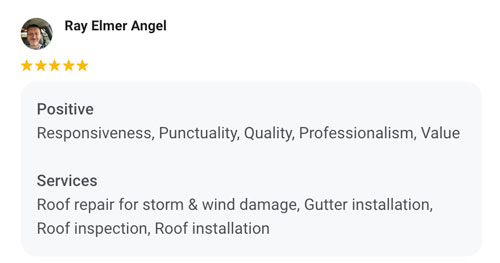Roof Materials
Whether asphalt, wood, clay, slate, or metal, they are the most visible and important feature of a roof. Asphalt, wood, clay, slate, metal, and composite are available in various colors. Roofs may provide character and protect a home while shedding water.
Shingles fade, especially in Oklahoma. Eventually, roofs must be replaced due to weather damage or wear and tear.
Layering materials in a step pattern lets water down the roof like stairs and into your gutters, where it flows down your downspouts and away from your house. Peaks, valleys, and pitch variations are easily protected from wind and weather.
The following list the common types of roofing details, but ratings can vary by quality, brand, and installation technique—verify with your roofer. Professional roofing contractors may need to check the structural condition of your old roof and determine any additional needs for the new one.


Examples of hail damage
Architectural Shingles
Lifespan: Up to 30 years
Fire Rated: Class C, Class B, or Class A
Wind Resistance: Rated at 80 mph to 120 mph
Hail Resistance Rating: Up to Class 4
Multiple layers of asphalt-coated fiberglass bonded together give them dimension.
Metal Roof
Lifespan: Up to 70 years
Fire Rated: Class A
Wind Resistance: High
Hail Resistance Rating: Class 4
Use galvanized steel or aluminum to prevent rust. Adds weight to your building’s structure.
TPO Roofing
Lifespan: Up to 30 years
Fire Rated: Class A
Wind Resistance: Rated at 120 mph
Hail Resistance Rating: Impact-resistance based on thickness
TPO, thermoplastic polyolefin, is a single-ply white membrane used in commercial and residential roofing. White TPO membranes reflect heat instead of absorbing it.
